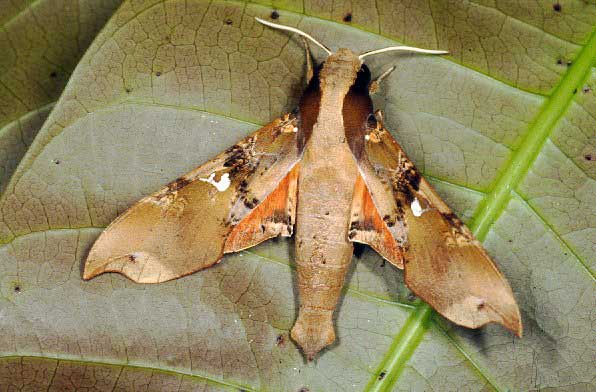
Callionima parce parce by Paolo Mazzei.
This site has been created by
Bill Oehlke.
Comments, suggestions and/or additional information are welcomed by
Bill.
TAXONOMY:
Family: Sphingidae, Latreille, 1802 |
|
|
Updated as per http://biological-diversity.info/sphingidae.htm (Belize), November 2007 Updated as per Fauna Entomologica De Nicarauga, November 2007 Updated as per The Known Sphingidae of Costa Rica, November 2007 Updated as per Erin Brandt image (Mato Grosso), March 2008 Updated as per personal communication with Jose Monzon (Guatemala); May 2009 Updated as per personal communication with Ezequiel Bustos (Aguas Blancas, Salta, Argentina, 405m); December 2009 Updated as per AN ANNOTATED CHECKLIST OF THE SPHINGIDAE OF BOLIVIA, December 2009 Updated as per Sphingidae (Lepidoptera) de Venezuela, Compilado por: María Esperanza Chacín; December 2009 Updated as per personal communication with Ezequiel Nunez Bustos (Osununu Private Reserve, Misiones, Argentina, November 24, 2009); December 2009 Updated as per personal communication with Larry Valentine (Itanhandu, Minas Gerais, Brazil, April 23, 2011, 925m); April 26, 2011 Updated as per personal communication with Andres Urbas (Camp Caiman near kaw, French Guiana, march 31, 2011); May 7, 2011 Updated as per personal communication with Larry Valentine (Itanhandu, Minas Gerais, Brazil, July 15, 2011, 925m); August 1, 2012 Updated as per personal communication with Sergio D. Ríos Díaz in CATÁLOGO DE LOS SPHINGIDAE (INSECTA: LEPIDOPTERA) DEPOSITADOS EN EL MUSEO NACIONAL DE HISTORIA NATURAL DEL PARAGUAY; sent to me in July 2014 by Sergio D. Ríos Díaz. Updated as per personal communication with Ezequiel Bustos (Shilap revta. lepid. 43 (172) diciembre, 2015, 615-631 eISSN 2340-4078 ISSN 0300-5267), January 4, 2016 Updated as per personal communication with Renata Xavier (Manaus, Amazonas, Brazil, February 11, 2020); February 16, 2020 |

This site has been created by
Bill Oehlke.
Comments, suggestions and/or additional information are welcomed by
Bill.
TAXONOMY:
Family: Sphingidae, Latreille, 1802 |
DISTRIBUTION:The Parce Sphinx Moth, Callionima parce
parce (Wing span: 2 5/8 - 3 1/8 inches (6.7 - 8 cm)), flies in
Brazil, (specimen type locality) and throughout Venezuela, north
through Central America, | 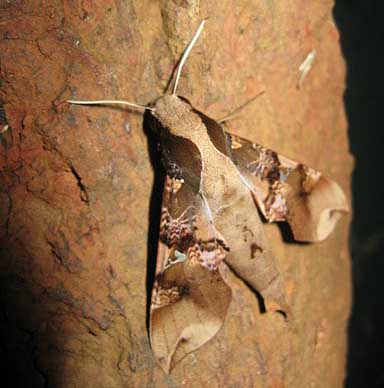
Callionima parce, Kaw, French Guiana, |
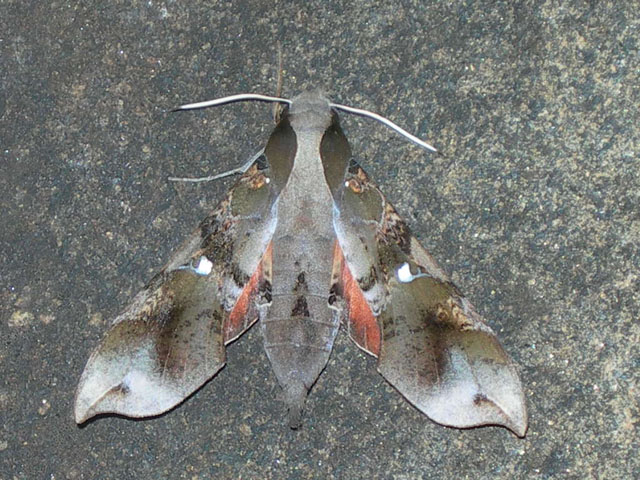
Callionima parce, Itanhandu, Minas Gerais, Brazil,
April 23, 2011, 925m, courtesy of Larry Valentine.
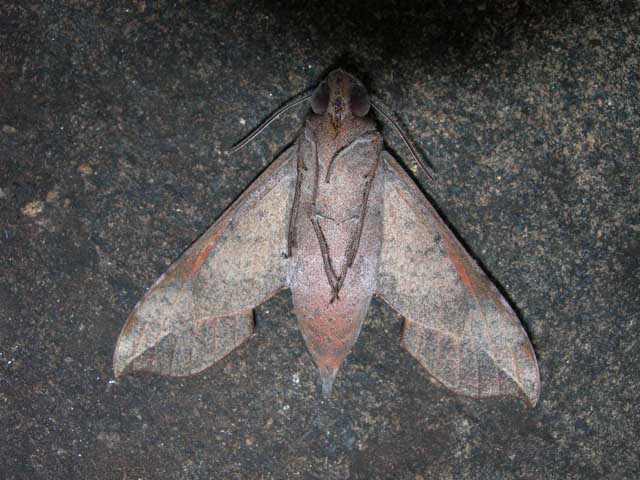
Callionima parce (verso), Itanhandu, Minas Gerais, Brazil,
April 23, 2011, 925m, courtesy of Larry Valentine.
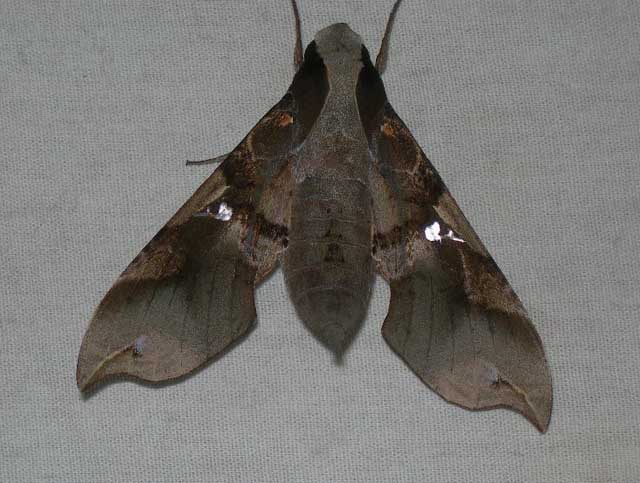
Callionima parce, Itanhandu, Minas Gerais, Brazil,
July 15, 2012, 925m, courtesy of Larry Valentine.
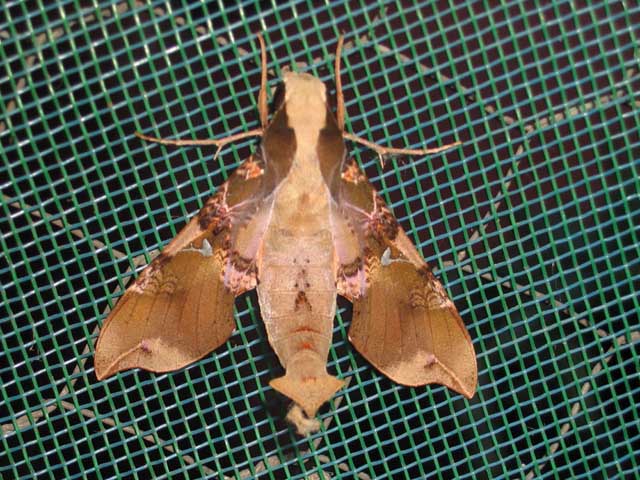
Callionima parce Cristalino Jungle Lodge, Mato Grosso, Brazil, courtesy of Erin Brandt.
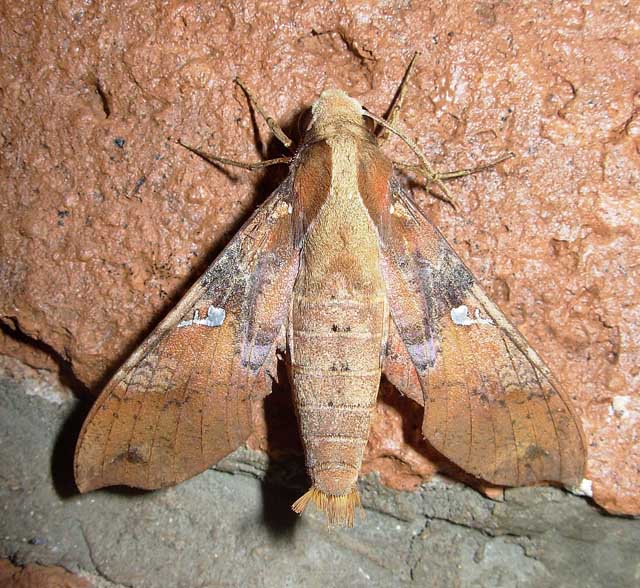
Callionima parce, Osununu Private Reserve, Misiones, Argentina,
November 24, 2009, courtesy of Ezequiel Nunez Bustos.
The upperside of the forewing is orange-brown with paler patches and a large silvery spot at the end of the cell. The upperside of the hindwing is reddish-orange.
Sphinx licastus, Cramer, 1782, Surinam, is same as
Callionima parce parce.
Sphinx galianna, Burmeister, 1856, Brazil, is same as
Callionima parce parce
Hemeroplanes parthenope, Zikan, 1935, Brazil, is same as
Callionima parce parce.
In the United States, the Parce Sphinx Moth flies from April-September in Florida, Texas, Arizona, and southern California. Larry Valentine has reported them in April and late July in Itanhandu, southeastern Minas Gerais, Brazil.
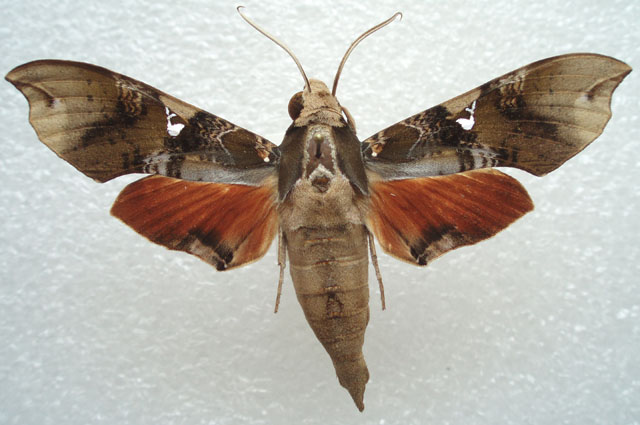
Callionima parce, Pook's Hill Reserve, Cayo District,
June 23, 2006, courtesy of Brant Reif.
Females are generally active from 10:30 pm unitl 2:00 am, while males are on the wing from 11:30 pm until 3:00 am.
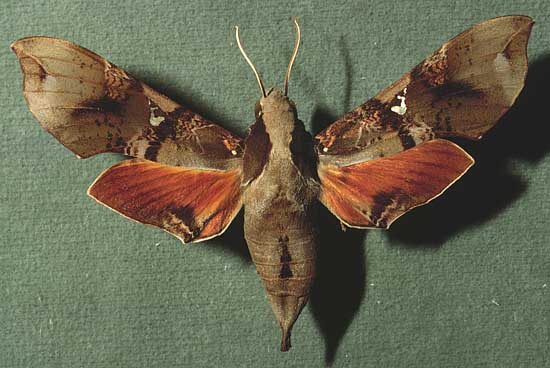
Callionima parce parce female courtesy of Dan Janzen.
Vernon A. Brou indicates "the above specimen (female) is not parce, and the first image (male)
may or may not be parce and that the species pictured in Hodges is not parce and the species listed in Brown is not
parce; both of these specimens pictured by these two authors are 2 different species also. Species pictured in Hollands Moth book
as parce is still a third species not parce and species pictured in the sphingidae of Cuba (Munoz & Dalmau) is not
parce. Quite probably all of these species I mention here are different from each other and none are parce.
"Furthermore, the genitalia pictured in R & J World Revision of Sphingidae is different from the genitalia of all the other so called
parce species I have mentioned here. "15 years ago I studied over 600 specimens of Callionima including numerous
genitalia preparations and discovered this situation. I do have a photo of what I beleive is true C. parce. If interested I can
try to locate it among my files. Let me say to truly resolve this matter will require comparison of the type specimen of parce.
Furthermore, the genus obviously needs a major revision as there are numerous synonomies in error in the literature and most probably
several new undescribed species among the genus. I really doubt that the species you and others list as occurring in Florida is the same
species found in the west to California. All of these records are apparent migrating singletons that have made appearances into the US
over many years. "
"I was looking at the Callionima parce page.
"In fact the distinction between parce and falcifera is clear since the work of F.F. YEPEZ in Maracay,
Rancho Grande, and the work of GARCIA at the same place. When my friends KITCHING & CADIOU write about the flight time, they mention
that study. I was in Rancho Grande with Yepez at that time.
"They notice that the two species fly together, one before midnight and the other one after midnight. This is true; I observed
this distinction during two months of collecting. First they called the redder and more falcate species, flying after midnight
"elainae", and they refered to the browner and less falcate species flying ealier as parce.
"In fact, falcifera has the priority (over elainae), and now we all use that name. So in your page, the two pictures are
parce, and only the one from Mexico is falcifera, a splendid female.
"Dan Janzen's picture is of a true parce.
See the work of SOARES on that group. On Hodges, we all know that he depicts a falcifera, not a parce (see the color and
the shape of the wings).
"The problem started in South America: S. Brazil, Bolivia, Argentina. There may be even a third species, that could be
guiarti (also called modesta). Ian and Jean Marie say no, but I am not so sure they are right. But as they say, in the
male genitalia, there is no difference.
"So on your page, you depict two parce and one falcifera. Let's say that in the USA, parce is really rarer than falcifera.
I have seen a large series of falcifera from Arizona, but I have not seen parce from that state.
"Cheers,
"Jean"
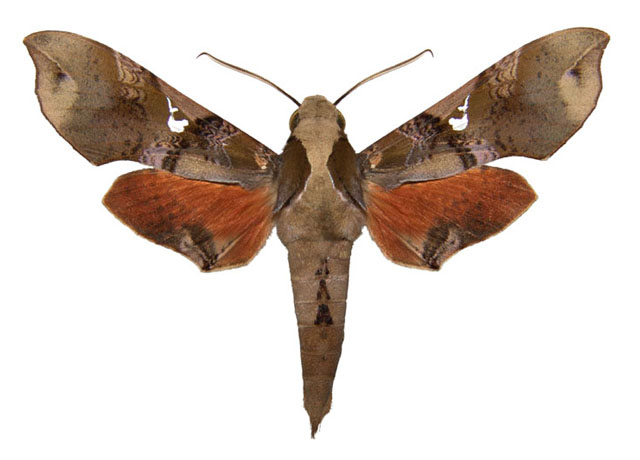
Callionima parce male courtesy of Hubert Mayer copyright.
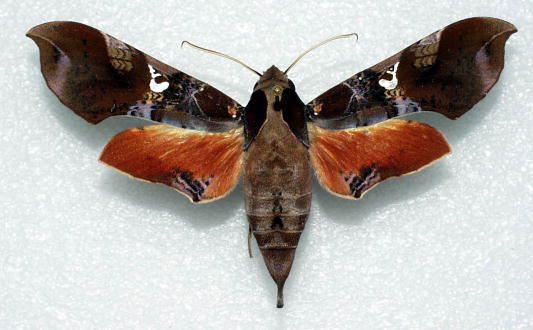
Callionima falcifera, courtesy of Manuel Balcazar-Lara
idenitifed by Jean Haxaire.
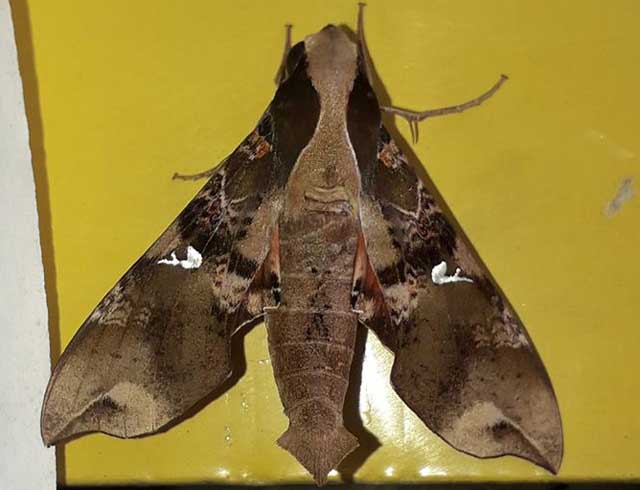
Callionima parce male, Manaus, Amazonas, Brazil, February 11, 2020,
courtesy of Renata Xavier, idenitifed by Jean Haxaire.
Larvae feed on Stemmadenia obovata and probably on other members of the Apocynaceae family.Huevos de caballo, cojones de burro, cojón, cojón de puerco, and cojón de coche (Guatemala), are the common names for Stemmadenia obovata. In English, the common name is "Horse Testicles". This tree has a smooth, pale whitish bark with prominent lenticils. The leaves are simple and glossy. The fruit is green and is paired (resembling its common name "horse testicles"). |
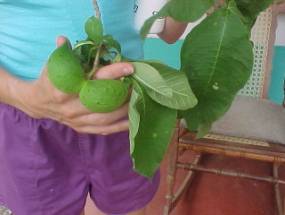 |
Return to U. S. A. Table
Return to Sphingidae Index
Return to Dilophonotini Tribe
Use your browser "Back" button to return to the previous page.
This page is brought to you by Bill Oehlke and the WLSS. Pages are on space rented from Bizland. If you would like to become a "Patron of the Sphingidae Site", contact Bill.
Please send sightings/images to Bill. I will do my best to respond to requests for identification help.
Enjoy one of nature's wonderments: Live Saturniidae (Giant Silkmoth) cocoons.
 Show appreciation for this site by clicking on flashing butterfly to the left. The link will take you to a page with links to many insect sites. |